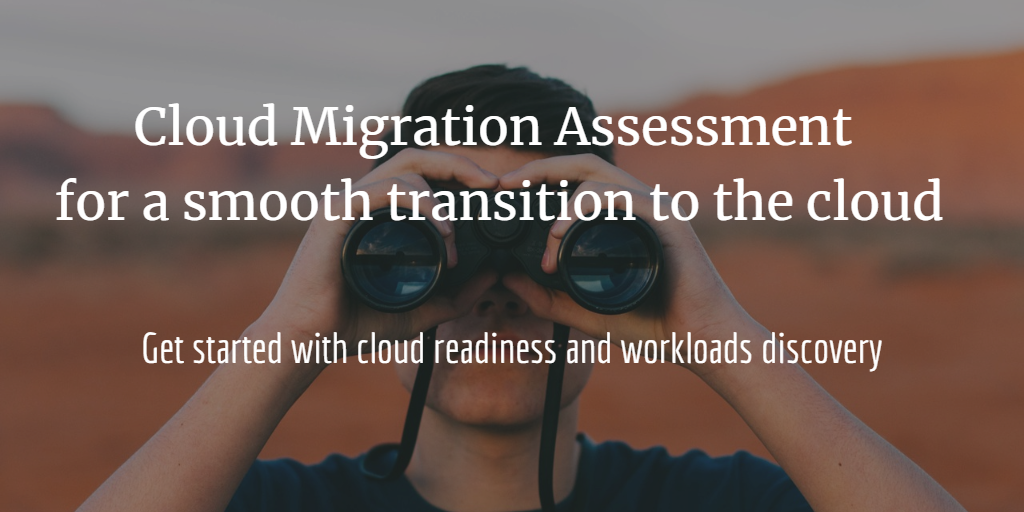
Implementing cloud or cloud migration is challenging. Organizations that have built thousands of applications over the past two to three decades require re-architecting to run efficiently, securely, and resiliently in the cloud.
Your next steps are to perform a cloud migration assessment based on your cloud strategy and business objectives. It will help identify the right migration pattern and cloud architecture required to go for the workload. Today we will talk about three vital areas.
- Cloud migration scenarios
- Workload-centric Approach
- Cloud migration assessment method
You could have different business goals to introduce digital products and services to market faster. You want to reduce your technical debt or replace on-premises infrastructure due to the end of life. All these reasons are leading you to migrate to the cloud. However, you need to decide and call which application/system is the right candidate for migration. You need to have a clear understanding of the target application’s only requirements and dependencies.
On the other hand, digital transformation forces you to make quick decisions, like Microsoft CEO’s famous quote.
“We’ve seen two years of digital transformation in two months.” By Microsoft CEO Satya Nadella
Hybrid & Multi-Cloud:
The way industry and customers adopt the cloud, we can state that hybrid cloud is the ‘new normal.’ The report published in March 2020 by IDC that more than 90% of global organizations will rely on the hybrid cloud by 2022.
Another survey done by Business Wire concluded that 97% of IT managers plan to allocate workloads across two or more clouds to maximize resilience, meet regulatory and compliance requirements, and leverage best-of-breed services from diverse cloud providers.
It is vital to consider yourself in the 90% of the organizations, who will use hybrid & multi-cloud models to follow the systematic approach, resulting in you reap the fruit. So let’s go into details, as the first point of our today’s discussion.
1-Cloud migration scenario / strategies
Broadly, the customers have practiced common approaches/scenarios and even advocated by the prominent vendors. For example, Gartner is calling them ‘Five Rs of migration’; others are calling them ‘Six R’s of migration’ (Rehosting (‘lift & shift’), Replatforming, Repurchasing (SaaS), Refactoring, Retiring, Retaining).
These five or six scenarios can be categorized into three distinct categories.
- Lift & Shift
- Move & Improve
- Rip & Replace
These cloud migration scenarios are also dependent on when you determine what’s in the environment, the dependencies, what’s going to be easy to migrate and what’s going to be hard to migrate, and how you migrate each workload.
2-Cloud migration approach – Take a Workload-centric Approach
The intricacy of migrating workloads differs, and it can be a harrowing process; it depends on the architecture, multi-tiered applications, licensing arrangements, risks, security and compliance requirements, etc. Nevertheless, you lead to an inevitable failure if you undertake the migration without a solid understanding of the workload.
In today’s world of COVID-19, it’s fathomable that failures can, do, and will happen; what’s not acceptable today is downtime.
Most of the time, we tried to focus on the underlying infrastructure for data center migrations and just trying to mirror on-premise hardware to the cloud. It leads to significant failures, and you have to start focusing on the application rather than the underlying infrastructure. It would help if you had a complete understanding of the workload, and all application dependencies can prevent a lot of patchwork and clean up after the migration is complete.
Getting to this point where you have the complete information on the workload and then using this knowledge can outline how you will approach migrating each of the workloads.
It is our 3rd point of today, where we want to know 100% about all applications, systems in our organization
3-Cloud Migration Discovery/Assessment Method
The most crucial stage of any migrations strategy is profiling each workload and apprehending its dependencies. It is the preeminent mode to move to the future and take advantage of the cloud.
Let’s define few vital steps to achieve this:
- Business impact – workload-centric (every application, system), how critical to business it is? Have classification to the workload in place.
- Application Architecture assessment – is it an n-tier application? What is the application stack? What is the status of the application from a cloud readiness point of view? If it’s proprietary, what is the roadmap of the vendor? The business risks of performing a migration?
- Technical considerations – what is the migration approach? Interoperability, integration, and dependency mapping must be done. Application environment details (hardware, operating system, storage, network, etc.). What is the functional complexity? What is the underlying technology architecture?
- Generic, however, significant areas: what are the requirements for security and compliance. Audit requirements, Availability, regulatory compliance, security controls required by the application.
- Migration cost & operational cost. Software/licenses cost, SLAs, etc.
You’ll Learn:
Three key areas to assist you in getting started with migration to cloud
- What are the common scenarios / strategies for migration to cloud
- How to plan for Workload-centric Approach
- Why Migration Discovery/Assessment is vital for the success of cloud journey.
Resources:
- Session no 91: Workload Migration to Cloud – Getting Started
- 2 years of digital transformation in 2 months
- IDC expects 2021 to be the year of multi-cloud as global COVID-19 pandemic reaffirms critical need for business agility
- Infrastructure and security challenges threaten multi-cloud and edge deployments, new survey from Volterra shows
- How CIOs and CTOs can accelerate digital transformations through cloud platforms